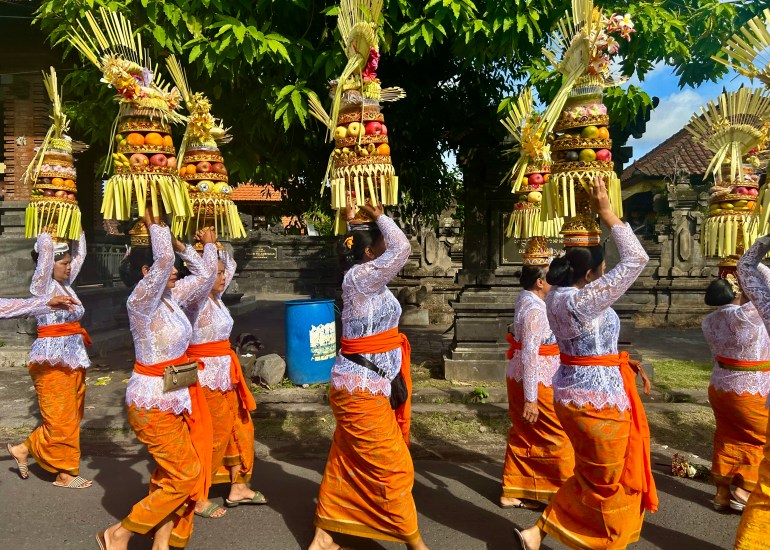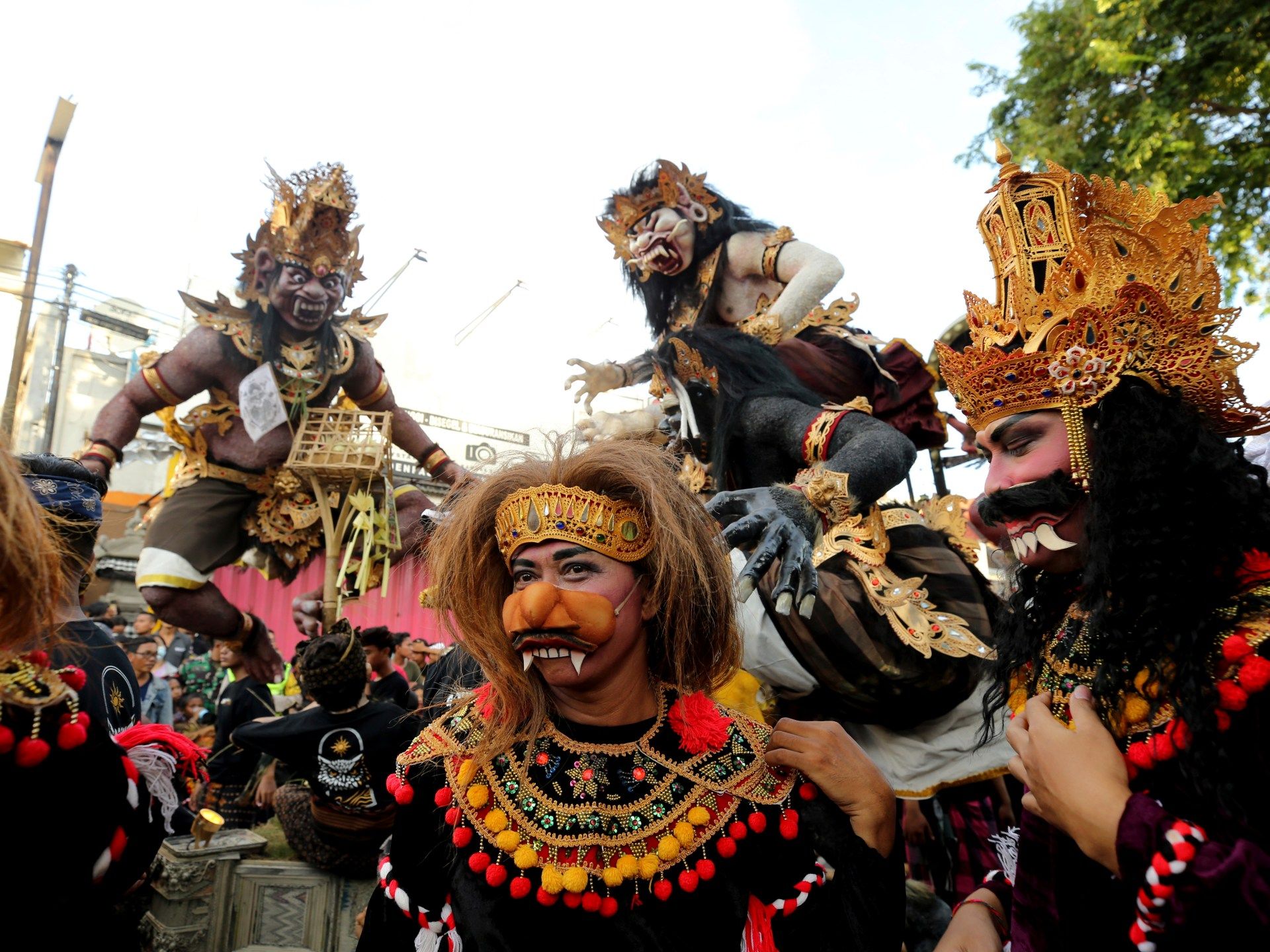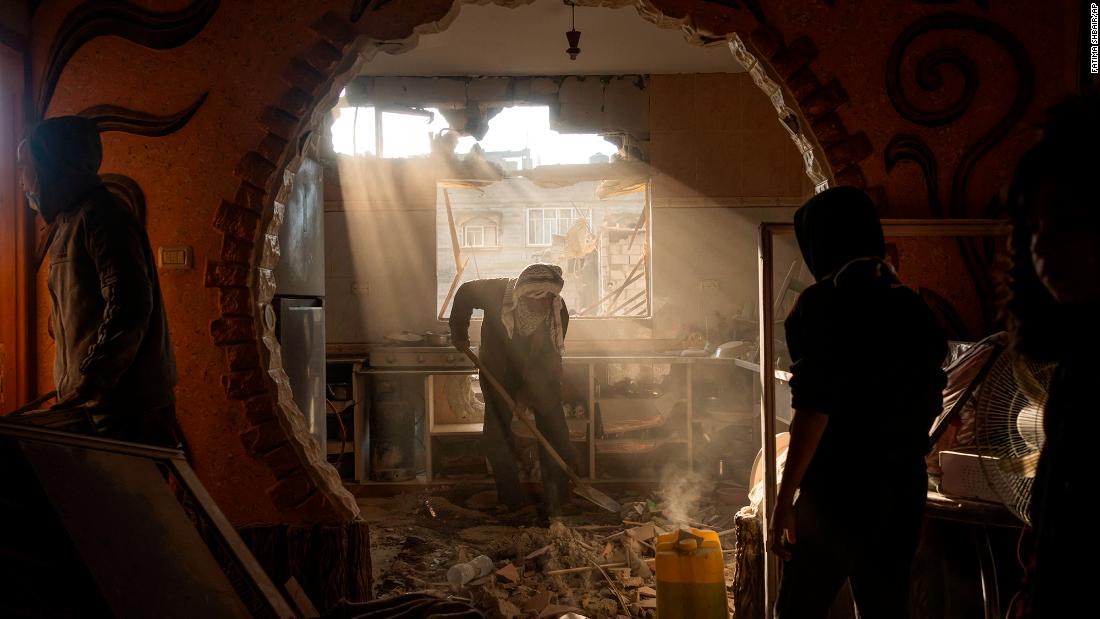Bali, Indonesia – At dawn, as the first rays of light dance over the rice fields of the coastal village of Seseh, on the west coast of Bali, Putu and her husband Made, who like many Indonesians have only one name, spend an hour reciting prayers and distributing small Baskets of palm leaves containing offerings to ensure the health of the next harvest.
Later that day, her 11-year-old daughter will attend a “sanghyang dedari” class, a sacred trance dance for girls designed to counteract negative supernatural forces.
Meanwhile, his two older brothers will hone their skills on wooden xylophones and hand drums as part of a traditional “gamelan” orchestra in preparation for a ceremony celebrating the completion of a new Hindu temple, one of more than 10,000 there. on the island.
In the coming weeks, Made and her children will help their neighbors create giant “ogoh-ogoh” dolls, representations of evil mythological creatures made of wood, bamboo, paper and Styrofoam, which will be paraded through the streets and set on fire at night. former. Nyepi, the Balinese Hindu New Year.
This year, on March 11, Nyepi, or the “day of silence”, will see all the island's lights turned off, transport paralyzed and the airport closed. Everyone, Balinese or not, will stay at home to give the evil spirits the impression that there is nothing on the island.
“Every day I make offerings, attend a ceremony or go to a temple,” Putu told Al Jazeera. “I do this because I am Hindu, because I believe. My children do the same and when they have children, they will do the same too.”
The Balinese Anomaly
Putu's hopes for the future are shared by the vast majority of Balinese, an island where a hybrid Hindu-Buddhist religion based on ancestor worship and animism dating back to the first century has survived and even thrived in the face to mass tourism.
By 1930, the number of tourists reached several hundred per year. Last year, 5.2 million foreigners along with 9.4 million domestic tourists visited Bali, according to government data, and the island is developing at a rapid pace to meet demand.
The negative effects of such tremendous growth are illustrated in the murals of Balinese artist Slinat, who combines iconic photographs of Balinese dancers with contemporary emblems such as gas masks and dollar bills.
“These old photographs were the first images used to promote tourism in Bali and convey that it is an exotic place. They boosted tourism in Bali,” Slinat told Al Jazeera. “But then we had too much tourism and that ruined the exoticism of Bali. So I created this parody to express how much things have changed here since those photos were taken.”
However, traditional Balinese culture and religion have remained resilient in the face of tourist onslaught, which is something of an anomaly compared to other tourist hotspots around the world.
“When local people entertain tourists, they adapt [to] the needs, attitudes and values of tourists and, ultimately, start following them. By following the lifestyle of tourists, young people bring changes in material goods,” concluded a study on the impact of tourism on culture published in 2016 in the Journal of Tourism, Hospitality and Sports.
The study said the Pokhara-Ghandruk community in Nepal was a textbook example, where “the traditional fashion, behavior and lifestyle of Gurung youth have been severely affected by tourism… [who] disobey the kinship titles of their elders.” He said Indonesia was an exception: a country where “to attract distant tourists, children cultivate local customs to create a strong and authentic base of cultural components without altering the values of the ancestors.”

I Nyoman Gede Maha Putra, professor of traditional architecture at Warmadewa University in Bali, explains the roots of that approach.
“Colonial government policies dating back to the 1930s that promote how Balinese should be Balinese, including school curricula, production of traditional foods and beverages, and outsized investments in religious buildings, have played a role. key in the preservation of culture and religion on the so-called Island of the Gods,” he said, adding that building codes formalized in the 1970s requiring that no new building be taller than a coconut tree had helped to maintain “a sense of place” on the island.
“Soon, all our youth will start making ogoh-ogoh paper statues for Nyepi. No one will be left out. They will enjoy the process, they will enjoy the parades, and they will feel proud when tourists see what they have done. And our daily ceremonies will continue because we firmly believe that the ghosts of our ancestors live around us and our ceremonies are the only way we can communicate with them,” said Maha Putra.
a facade
Others say it is the adaptability of Balinese culture that has made it resilient.
“Balinese culture is not static,” I Ketut Putra Erawan, a political science professor at Udayana University in Bali, told Al Jazeera. “Time and again you have proven that you have the power to reinvent yourself through the problems and opportunities we face; things like tourism, social media, individualism, capitalism and mass culture. Find new ways to become relevant to young people in new times.”
But these new forms and expressions are not as solid as those of the past, he warns.
“Today we are inundated with so much information and misinformation, and what that tends to do is promote the skin of the culture, the external element of the culture, things like consumerism and fashion, but not the core of the culture,” he said. Erawan. . “Many people prioritize the wrong things in their cultural expressions. “They are much more interested in dressing like Balinese and telling everyone on social media that they are Balinese rather than gaining the high level of knowledge needed to understand our complex culture and religion.”
Rio Helmi, an Indonesian photographer whose work focuses on the interaction between indigenous people and their environment, agrees.
He fears that time will go against Balinese culture.
“As for the strength of culture, I think there is some truth to that,” he told Al Jazeera. “But a lot of this has to do with identity rather than participation in the deeper side of the culture and its values. What I'm seeing now looks more like form than function. People always repeat the phrase 'tri hita karana' (maintaining a good relationship between man and God, man and nature, man and environment) but it often seems like a slogan, a bandage to cover up bad things, like people who build on sacred lands. . You have to be careful with generalizations because there are still many people who live traditionally. But the power of money is everywhere.”

Today, multi-story hotels and condominiums, many times taller than coconut trees, are springing up in the island's traditional rice fields. But the biggest display of the disparity between form and function, Helmi says, will be during the ogah-ogah procession in Ubud, the spiritual heart of Bali that has expanded from a quiet cultural village to a bustling tourist center, where there will be speakers, souvenir sellers and music kiosks.
“It will be a true spectacle for tourists, while in the towns the events will be about introspection, feeling the end of the year and expelling demons. It is their moment, their culture. “It’s not a show,” Helmi said.












